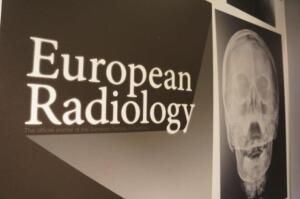by
Carol Ko, Staff Writer | March 27, 2013
Over 20,000 delegates from 101 countries attended the European Congress of Radiology on March 7-11 in Vienna, Austria.
The ECR saw 20,098 participants this year — a figure that has remained surprisingly steady since 2011. The conference's continued draw is worth noting in light of RSNA's much-publicized drop in attendance in recent years.
Among attendees, the most highly represented countries included (in order from highest to lowest): Italy, Austria, Germany, U.K., Netherlands, Russian Federation, Spain, Japan, Denmark, and Belgium.



Ad Statistics
Times Displayed: 109208
Times Visited: 6638 MIT labs, experts in Multi-Vendor component level repair of: MRI Coils, RF amplifiers, Gradient Amplifiers Contrast Media Injectors. System repairs, sub-assembly repairs, component level repairs, refurbish/calibrate. info@mitlabsusa.com/+1 (305) 470-8013
A new service called ECR Live also made it possible to follow the congress remotely — more than 3,000 registered users were able to see over 1,400 lectures that were broadcast online.
Ultrasound technology was a big theme of the show, and it's not hard to see why. It's versatile, cost effective and low in dose — highly relevant advantages in a difficult global economy, especially in Europe. For example, one popular talk presented the results of a study that may show that a new real-time shear wave elastography technique (using ultrasound) could help reduce the need for liver biopsies and improve diagnosis of liver fibrosis.
Dose reduction in general continued to be a hot topic for radiologists: all the sessions around dose were packed. One popular CT dose reduction session talked about recent developments in scanner design and software that assist CT users in optimizing radiation dose. The talk also discussed multiple technical settings radiologists can use to reduce dose such as collimation, pitch and more advanced possibilities.
A high-profile study presented March 10 that garnered a lot of buzz showed that using MR for dense breasts could reduce biopsies by 88 percent and end up saving insurance companies money. However, the results may also depend on reader experience and adequate technical standards, according to the study.
One session on MR safety focused on growing concerns around high-field and ultra-high-field MR scanners. With stronger gradient systems resulting in peripheral nerve stimulation that produces paresthesias and pain, MR safety issues become more and more critical. The session discussed the need for stricter access control to the magnet room.
On the PACS side, one session on new PACS architecture discussed the need for wider, more seamless integration between PACS and other information systems. Session presenters discussed how hospital information systems of the future must increasingly use a nontraditional approach that harnesses teleradiology, mobile and web technologies.
Back to HCB News

